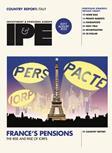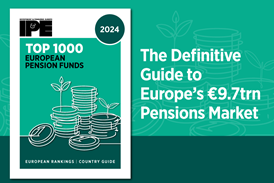Peter O'Kelly
2 comments By Peter O'Kelly
Scientific Beta participated in the call for feedback organised by the TEG in July 2019 and, along with a majority of the respondents, opposed the introduction of a novel carbon intensity metric. At the time, the normalisation metric was accounting-based and the TEG explained: "The TEG explicitly uses the book values instead of market values for the definition of Total Capital, as market effects can significantly affect this indicator and create misleading results." (p41)
The final report of the TEG recognied issues about book values and introduced enterprise value for normalisation, i.e. a metric mixing market and book values. In its February 2020, white paper analysing the TEG proposals, Scientific Beta devoted over 4 pages to the metric issue (Unsustainable Proposals: https://www.scientificbeta.com/#/news-events/unsustainable-proposals )
In its open letter to the European Commission dated 4 May 2020 and its public contribution to the consultation on the draft delegated acts, Scientific Beta again alerted against issues with the metric and how it was used - some of these issues were corrected in the Commission's final proposal but fundamental problems remain unaddressed.
Using EVIC normalisation in a carbon footprinting and reporting context can be defended as explained in Scientific Beta's latest white paper ( https://www.scientificbeta.com/download/file/carbon-intensity-bumps-on-the-way-to-net-zero ). What is objectionable is to guide index construction by a measure that is particularly subject to market effects and obscures the efforts made by issuers to control their emissions, which, on the contrary, should be encouraged.
As this article mentions, Scientific Beta’s research finds that, since it has been possible to offset negative performance for some factors through the good performance of other factors, the issues relate more to the factor exposure implementation choices than to the factors themselves. For instance, in the last three years, the non-control of market beta exposure in a bull market context has prevented the vast majority of multi-factor indices on the market from benefitting fully from the important market risk premium. It is this poor market conditionality rather than the variations in factor returns that explains the disappointing performance of long-only factor offerings over this period.
In a long-only framework, index and strategy design rarely takes account of the non-factor risks induced by the factor exposure choices. Among these risks, the market beta risk or gap, which often corresponds to an unstable and defensive bias in the construction of factor strategies, is the one that has the most impact over the long term in terms of both the return and volatility of these strategies and it is the one that is controlled the least.
A full account of Scientific Beta’s research in this area can be found in the following publication: What Really Explains the Poor Performance of Factor Strategies over the Last 3 Years? September 2019, Scientific Beta White Paper
https://www.scientificbeta.com/download/file/poor-performance-of-factor-strategies















Commented on: 13 November 2020
Investors warned about carbon intensity metric in EU climate indices